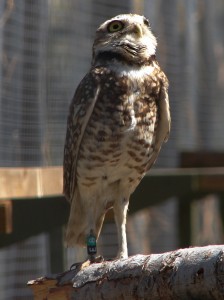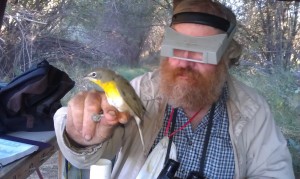 On December 12, 2002 the Canadian Federal government enacted into law the Species at Risk Act (SARA) which fulfills the country’s commitment under the International Convention on Biological Diversity. The main focus of the act is to protect endangered or threatened organisms and their habitats. It also considers species which are not yet threatened, but whose existence is in jeopardy.
On December 12, 2002 the Canadian Federal government enacted into law the Species at Risk Act (SARA) which fulfills the country’s commitment under the International Convention on Biological Diversity. The main focus of the act is to protect endangered or threatened organisms and their habitats. It also considers species which are not yet threatened, but whose existence is in jeopardy.
Under SARA methodology is determined which must be taken in order to protect existing healthy environments, as well as the recovery and rehabilitation of threatened habitats. The Act specifies ways in which governments, organizations, and individuals can work together to preserve species at risk and establishes penalties for failure to obey the law.
The Act designates COSEWIC, an independent committee of wildlife experts and scientists, to identify threatened species and assess their conservation status. COSEWIC then issues a report to the government, and the Minister of Environment evaluates the committee’s recommendations when considering the addition of a species to the List of Wildlife Species at Risk
Definitions:
1) Endangered: A species which is facing imminent extirpation or extinction from Canada. In the South Okanagan the following are in this category: Burrowing Owl, Yellow- breasted Chat, Lark Sparrow, White Headed Woodpecker, Western Screech Owl, Sage Thrasher, Williamson’s Sapsucker, Nightsnake, Western Painted Turtle, Tiger Salamander and American Badger.
2) Threatened: A species which is likely to become endangered if nothing is done to protect them. In the South Okanagan the following are in this category: Pallid Bat, Northern Goshawk, Peregrine Falcon, Western Rattlesnake, Great Basin Gophersnake, Great Basin Spadefoot and Behr’s Hairstreak Butterfly.
3) Special Concern: A species which may become threatened or endangered because of their natural characteristics and/or identified threats. In the South Okanagan the following are in this category: Spotted Bat, Nuttall’s Cottontail Rabbit, Lewis’s Woodpecker, Rubber Boa, Long Billed Curlew and Barn Owl
4) Extirpated Species: A species which no longer exists in the wild in Canada but still exist in the wild in other places. In the South Okanagan the following are in this category: Pygmy Short Horned Lizard and Greater Sage Grouse.
 An integral part of SARA is the requirement that a recovery plan must be put in place for each species which is listed as either: extirpated, endangered or threatened. The plan must include recovery strategies, action plans and management plans. The document must address major threats to the species as well as identify what habitat is critical to their survival or recovery.
An integral part of SARA is the requirement that a recovery plan must be put in place for each species which is listed as either: extirpated, endangered or threatened. The plan must include recovery strategies, action plans and management plans. The document must address major threats to the species as well as identify what habitat is critical to their survival or recovery.
A recent example of a recovery strategy concerns the Yellow-breasted Chat auricollis subspecies in British Columbia. In August of 2011 Environment Canada announced a Draft Federal Recovery Strategy for the estimated 153 breeding pairs of Yellow-breasted Chat.
To begin the process, a letter was sent out to all property owners which have habitat that is critical to the Chat. Property owners/managers were asked to provide comments on the draft recovery strategy. After the initial 60 day comment period, the Ministry will proceed to develop a final draft recovery strategy.



Hi Kathleen
These are great questions that you have raised. Regarding both the Migratory Bird Act and the Endangered Species Act it may be difficult to evaluate their effectiveness. The Migratory Bird Act was passed in 1918 and updated in 1994 and 2005 was orginally brought about to stop the slaughter of birds whose feathers were used in clothing. The orginal listing did not include species such as raptors, passerines, etc. From what I can tell the Endangered Species Act was limited as it was a federal statute but left the provinces to inact their own endangered species leglislation.
My impression of the Species at Risk Act leads me to believe that this attempt may be more serious. Where I live in the South Okanagan we have 53 species of animals who are endangered or threatened (this is 10% of Canada’s endangered/thretened species). One of those that I mentioned, the Yellow Breasted Chat, they estimate that there are only 153 pairs in the Okanagan and Similkameen Valley is on the Species at Risk List. Presently a recovery plan is being developed, I have seen correspondence to land owners asking for their input (these areas are defined as critical habitat). Several years ago , two wildlife photographers discovered a Yellow Breasted Chat nest and wanted to shoot some pictures. In the process they removed a lot of the surrounding brush and a result the Chat’s were not successful in producing offspring. When the conservation authorities learned of this, they proceeded to prosecute and were successful in having a fine of $5,000 imposed.
Last month, in BC, in order to protect the remaining 10 Northern Spotted Owls, the conservation officers were given permission to shoot any Barred Owls within a 5 kilometer radius of the Spotted owls nesting sights. Perhaps a seemingly radical response, the Barred Owl is suspected of predating on the Spotted Owl.
Hopefully, this helps to address your questions.
Is this the first law that Canada has passed regarding Endangered Species or is it an overhaul of existing law? Also, to what extent did the Migratory Bird (Treaty) Act afford protections to species in Canada? Did it? Any ideas?